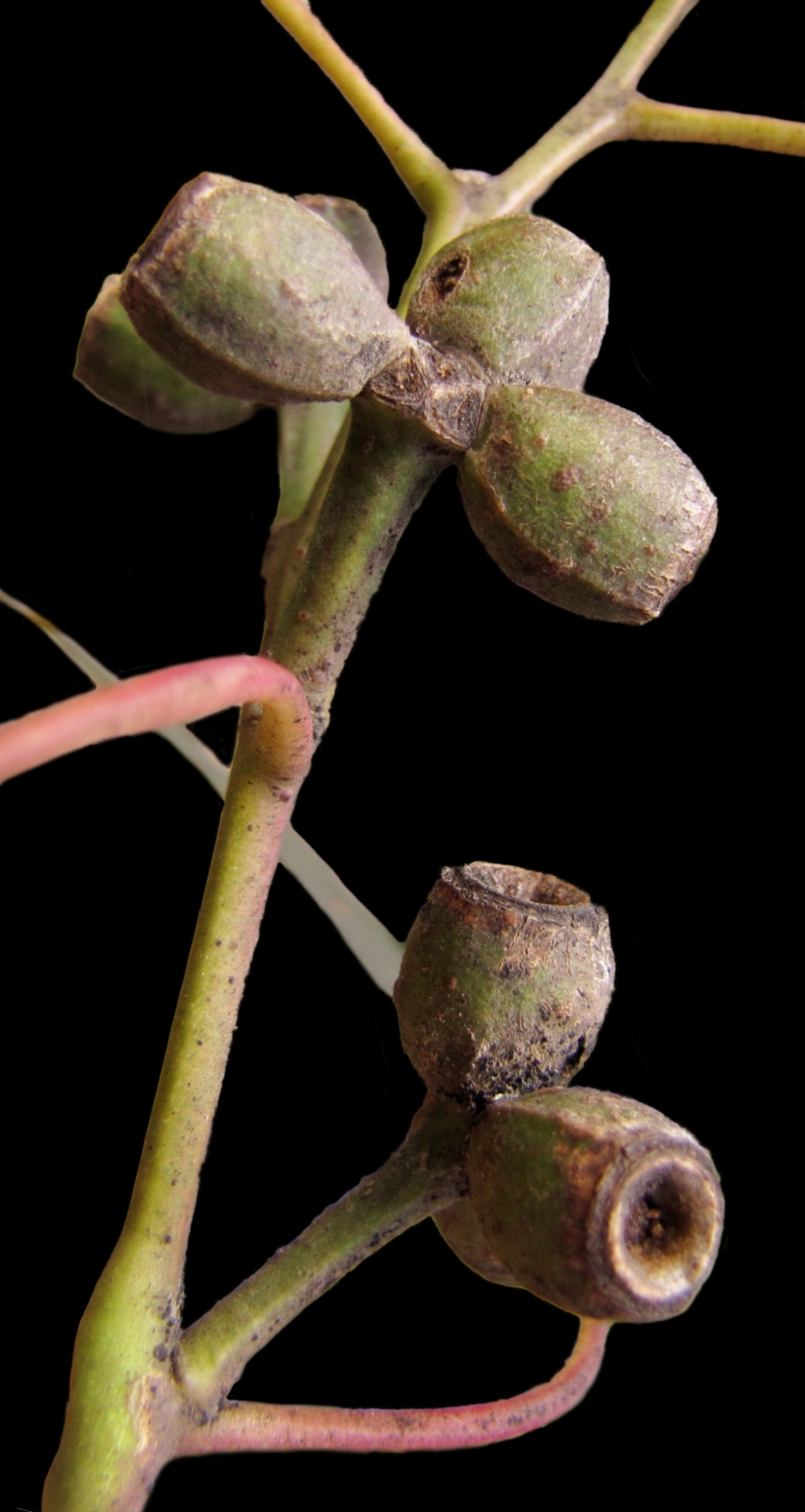Eucalyptus litoralis
RuleTree to 18 m tall, sometimes multi-stemmed; bark rough over much of trunk, fibrous, thin, grey-brown, persistent, less often forming a short basal stocking. Juvenile leaves sessile, opposite for many pairs, broadly ovate to broadly elliptic, cordate, to 8 cm long, 6 cm wide, discolorous, glossy, green above, tips lightly pruniose; adult leaves petiolate, alternate, broadly lanceolate, 18–35 cm long, 2.5–4.5 cm wide, concolorous, glossy, green, reticulation dense, with scattered island and intersectional oil glands. Inflorescences axillary, unbranched; peduncles flattened, to 2.5 cm long, 7-flowered; buds sessile or shortly pedicellate, ovoid-cylindric, bulging near base, to c. 1.4 cm long, 0.6 cm diam., with conical to rostrate operculum, hypanthium ribbed, scar present; stamens inflexed; anthers dorsifixed, oblong; ovules in 4 vertical rows; flowers white. Fruit sessile or pedicellate, cylindric to truncate-ovoid, to 1.3 cm long, 1.1 cm diam.; disc descending; valves 3 or 4, rim level or below; seed dark brownish-black, flattened-ellipsoid, shallowly reticulate, hilum ventral.
OtP, OtR. Apparently restricted to coastal areas from Anglesea to Aireys Inlet, growing on shallow, sandy soils on low ridges and slopes.
Eucalyptus litoralis, E. alaticaulis, E. pyrenea and E. carolaniae are all somewhat intermediate between E. cypellocarpa and E. goniocalyx, and it was hypothesised that these represented hybrids between those two species. However, this has been refuted by seedling trials and morphological uniformity (see Parsons & Kirkpatrick 1972, Watson et al. 1987, Rule 2012). Eucalyptus litoralis is distinguished from E. cypellocarpa by its shorter size, persistent rough bark, shorter and relatively broader juvenile leaves, and larger buds and fruits. It is distinguished from E. goniocalyx by its relatively narrower, largely non-pruinose seedling leaves, winged stems, larger adult leaves, thinner, less persistent bark that does not extend into secondary branches, and larger buds and fruits. It is distinguished from E. carolaniae primarily by its larger buds and winged stems.
 Spinning
SpinningRule, K. (2012). Five new endemic eucalypts for Victoria. Muelleria 30: 83–105.

